By Allen Barra
Baseball, football and basketball have endless statistics for measuring achievement. For fighters, the only statistics that matter are wins and losses. They don’t play in leagues, and many rules are unwritten.
Their careers can be determined by chance, from a plane crash to a movie bio-pic.
Here are 24 men whose greatness goes largely unrecognized. They were contenders and even champions, and with a break or two could have been household names.
#24: Carlos Zarate
Born: May 23, 1951
Nickname: Cañas
Record: 66-4-0 (63 KOs)
Does it seem like Latin fighters are often overlooked when naming the greats? Any list of the greatest fighters, pound for pound, of the last half century that doesn’t include Carlos Zarate is uninformed.
Born in Mexico City, Zarate had a career record of 66-4 with an eye-popping 63 knockouts. Twice, he scored KOs in 20 consecutive fights.
He was one of the great punchers of all time in any weight division, fighting in four weight classes — super featherweight, featherweight, super bantamweight, and bantamweight. He finally won the 115-118 pound bantamweight title in 1976, six years after his first fight. He held the crown until 1979, left the ring for five years, then returned to win 12 of his last 14 bouts.
Carlos was Ring Magazine’s fighter of the year in 1977 and was voted the number one bantamweight of the 20th century by Associated Press sportswriters.
In 2014, he attended a ceremony in Houston when he was voted the greatest bantamweight ever by the Houston Boxing Hall of Fame, which is made up of current and former fighters.
Viva Zarate!
#23: Louis Mbarick Fall, aka Battling Siki
Born: Sept. 22, 1897
Died: Dec. 15, 1925 (age 28)
Record: 60-24-4 (31 KOs)
Battling Siki lived through enough triumph, tumult and tragedy to fill a mini-series.
Born in French Senegal in 1897 as Louis Mbarick Fall, he immigrated to France in 1912 and took up professional boxing at age 15, changing his name to Battling Siki. With no one to train him, he floundered, winning just eight of his first 16 fights. He joined the French Army, won two medals for bravery, and also learned some boxing technique. Honorably discharged, he returned to the ring and went on a three-year tear, winning 43, losing three with one draw.
In November 1922, he knocked out French national hero Georges Carpentier — the man who had come to America to fight the great Jack Dempsey — and won the light heavyweight crown with a sixth-round knockout in a controversial bout.
The French took Siki to their hearts as he strutted around Paris, leading his Great Danes around Paris and firing a Colt revolver in the air to make them do tricks. Papers all over the world ran pictures of a smiling Siki, attired in tux and top hat, walking his pet lion on a leash down the Champs-Elysses.
Siki made a lot of bad decisions, beginning with defending his title against an Irishman, Mike McTigue, in Dublin, on St. Patrick’s Day. He lost a decision, which most British and French sportswriters thought he won.
What followed was a spiral of dissipation and rapid decline. He was much sought after by American promoters, and there was even rumor of a match with Jack Dempsey for the heavyweight title. It was not to be.
Training himself, or not training at all, Siki won just 11 of 31 fights, and in 1928, after a drunken spree, was found lying on a New York street shot in the back. His killer and the motive were never found.
He was only 28 when he died, so Battling Siki’s career record doesn’t reflect his greatness at his peak.
#22: Harry Wills
Born: May 15, 1889
Died: Dec. 21, 1958 (age 69)
Nickname: The Black Panther
Record: 75-9-2 (49 KOs)
Harry Wills was a contender. What he should have been was a champion. He was a champion, a three-time holder of the world’s colored heavyweight title, but Wills was never able to get into the ring with Jack Dempsey.
Dempsey was adamant about giving Harry a title shot, and the two signed for a fight in 1925, but the promoter, Tex Rickard, who had promoted Jack Johnson’s biggest fight, balked at the prospect of letting another black man fight for the crown.
The next year, Wills, poorly trained and handled, suffered a disqualification against future champ Jack Sharkey. By then, Wills was 37, and his skills had faded.
The great black heavyweights, denied a chance at the title, had to fight each other. More than 30 of Wills’s fights were against three of the best: Sam Langford, Sam McVey and Joe Jeannette. Ring founder and editor Nat Fleischer said that Wills, at his peak, was one of the best heavyweights he ever saw.
By the way, his nickname was “The Black Panther,” though his estate has yet to receive any royalties from Stan Lee.
Watch Wills beat Angel Luis Firpo in 1924.
#21: Harold Johnson
Born: Aug. 9, 1928
Died: Feb. 19, 2015 (age 86)
Record: 76-11-0-1 no contest (32 KOs)
Nickname: Hercules
Even knowledgeable fight fans have trouble recalling Harold “Hercules” Johnson, even though it wasn’t that long ago that he was in the ring. It’s a shame because from the 1950s through the early 1960s, he was one of the best middleweights and light heavyweights.
He had an admirable career record but just 32 KOs, which is probably the reason he isn’t better remembered today.
Johnson lost three of four fights with the great Archie Moore, but went the distance each time. He didn’t get a chance to fight for a title until 1961, when he was 33, and stopped Jesse Bowdry in nine rounds to become light-heavyweight champ.
He held the belt for two years when, at 35, he lost a razor-thin 15-round split-decision to Willie Pastrano. He also won a 10-round decision over heavyweight contender Eddie Machen in a non-title bout.
Here’s a gem for boxing trivia buffs: Both Harold and his father, Phil, fought and lost to the same man, future heavyweight champ, Jersey Joe Walcott.
Check out Hercules Johnson’s technical skills.
#20: Jack “Nonpareil” Dempsey
Born: Dec. 15, 1862
Died: Nov. 2, 1895 (age 32)
Nickname: Nonpareil
Record: 54-4-11-1 no contest (23 KOs)
Jack “Nonpareil” Dempsey was born John Edward Kelly in Curran, County Kildare, Ireland. He was the first man recognized as the world’s middleweight champion, and his fabulous career bridged from the old London Prize Ring rules to the modern Marquess of Queensbury era.
He named himself after a legendary Irish fighter named Jack Dempsey and was given the nickname “Nonpareil” because he seemed to be unbeatable. He nearly was, winning 62 of first 65 fights, and two of his losses were known to be fixes. Another loss, his only by knockout, came in the 13th round to “Ruby Bob” Fitzsimmons, who would later win the heavyweight crown.
Dempsey died of tuberculosis in Portland, Ore., at age 32. All but forgotten today, such was his legend in the years after his death that the name Jack was later appropriated by the leading heavyweight of the post-World War I era, William Harrison Dempsey.
#19: Mike Rossman
Born: July 1, 1955
Nickname: The Jewish Bomber or, if you prefer, The Kosher Butcher
Record: 44-7-3 (27 KOs)
Mike Rossman’s last name was actually DePiano — his father was Italian, his mother Jewish — but wearing the Star of David sold tickets. In 1978, fighting on the undercard of the Muhammad Ali-Leon Spinks heavyweight title fight, he won the light-heavy title with a sensational 13-round stop of the granite-jawed Argentinian champ, Victor Galindez.
After one title defense he fought a rematch with Galindez. Rossman broke his right hand early in the fight and, in a gutsy performance, lasted nine rounds before the pain got the best of him. He was never really the same after that, but his career record was good.
Here’s a spectacular knockout of Matt Ross by Rossman in 1978 before his first fight against Galindez.
#18: Jose Torres
Born: May 3, 1936
Died: Jan. 19, 2009 (age 72)
Nickname: Chegui
Record: 41-3-1 (29 KOs)
Jose “Chegui” Torres — no information on exactly what the nickname meant — is best remembered today for his stint as head of the New York State Athletic Commission from 1984 to 1988 and as an author. He coauthored a 1971 book on Muhammad Ali, “Sting like A Bee,” with an introduction by his friend, Norman Mailer, and his 1989 book on Mike Tyson, “Fire and Fear,” was made into a HBO movie.
But it should be remembered that Torres was a great fighter, a champion and the first Latin fighter to hold the light-heavyweight title.
Born in Puerto Rico in 1936, he got into boxing while in the U.S. Navy and fought professionally from 1958 to 1969. He won the 175-pound title in 1965 when his devastating body shots cut Willie Pastrano down after eight rounds.
However, Torres never enjoyed boxing. He lost his last two fights, both 15-round decisions to Nigerian fighter Dick Tiger, although many journalists covering the second bout thought Torres should have been given the decision.
He died of a heart attack in 2009 in his native Ponce de Leon, one of the most respected men in boxing. He was the subject of two documentaries by Japanese filmmaker Hiroshi Teshigahara, which you can watch here and here.
#17: Theodore “Tiger” Flowers
Born: Aug. 5, 1895
Died: Nov. 16, 1937 (age 32)
Nickname: The Georgia Deacon
Record: 136-15-8-2 (56 KOs)
Theodore Flowers had two nicknames: “Tiger,” the one he is remembered by, and “The Georgia Deacon,” as he would recite passages from the Psalms before every one of his fights.
His record was exemplary, and he fought all the best of his time, including Sam Langford (a heavyweight), Mickey Walker, and Harry Greb, whom he beat in 1926 at Madison Square Garden to become the first African-American (and the first lefty) to win the middleweight championship.
Tiger died young. Before he could fight a rematch with Walker, against whom he lost a controversial decision, he died during surgery to remove scar tissue around his eyes.
But Tiger Flowers was terrific.
#16: Thomas Joseph Gibbons
Born: March 22, 1891
Died: Nov. 19, 1960 (age 69)
Record: 96-5-4-1 (48 KOs)
Tommy Gibbons is, sadly, remembered for just one fight: on July 4, 1923, in Shelby, Mont.
Jack Dempsey was guaranteed $200,000, rode off on a train with $200,000, and, essentially, busted the town banks. Shelby never recovered. Gibbons got expense money, including train fare. He went 15 rounds with Dempsey and lost a unanimous decision. Dempsey was at his peak. At age 32, Tommy was past his.
Watch the incredible story of the Demspey-Gibbons fight.
Born in St. Paul, Minn., Gibbons began his career in 1911 as a middleweight, moved up to light-heavyweight, and, finally, heavyweight, fighting most of the big names in each weight division on the way. Though he wasn’t known as a puncher, he won 48 fights by knockout, some of them coming against fighters much heavier than him.
And the list of boxers he lost to were Hall of Famers, including heavyweight champs Dempsey and Gene Tunney (who stopped him in the 12th round, the only fight Gibbons didn’t finish in his career), Harry Greb, and Billy Miske.
Fun fact: After retiring from the ring, Gibbons was elected sheriff of Ramsey County, Minnesota, four times.
#15: Ernie Terrell
Born: April 4, 1939
Died: Dec. 16, 2014 (age 75)
Record: 46-9 (21 KOs)
If Ernie Terrell could have punched, he’d be a household name today. Instead, he’s remembered as the second of third or fourth best heavyweight in any year from 1957 to 1973.
Ernie was 6-foot-6, wiry and strong, and he could box, jab, and tie shorter men up on the inside — qualities that appeal to judges and referees, if not to fight fans. He was the World Boxing Association heavyweight champ from 1965 to 1967, a reign which ended when he lost a lopsided decision to Muhammad Ali, a fight marred by racial slurs between the two.
But Terrell fought and beat most of the other top contenders of his time. After an early career knockout to the murderous punching Cleveland “Big Cat” Williams, Terrell rebounded in the rematch to win.
You can see Terrell in action against Eddie Machen in 1965 here.
Many ex-fighters made their way into show business, but none of them could sing like Terrell, who headlined a group in the early ’60s, Ernie Terrell and the Heavyweights, which also featured his sister Jean, who replaced Diana Ross when she left The Supremes.
Listen to Terrell sing just 48 hours before he met Ali in the ring.
#14: Larry Holmes
Born: Nov. 3, 1949
Record: 69-6 (44 KOs)
Nickname: The Easton Assassin
Despite a terrific nickname, Larry Holmes was never a big box-office draw. He was, however, a superb technician, one of the best boxers in heavyweight history, with a left jab fully the equal of Muhammad Ali’s.
Holmes was the World Boxing Council heavyweight champ for nearly six years (1978-1983). He should not be remembered for his ill-advised comeback in which he came out of retirement at age 38 to fight Mike Tyson and lost on a fourth-round knockout.
Instead, Holmes should be remembered for his peak performances, most notably the incredible 15th round against Ken Norton in 1978, which won him the title.
Here’s the round, which many boxing historians call one of the greatest in heavyweight history.
#13: Oscar Bonavena
Born: Sept. 25, 1942
Died: May 22, 1976 (age 33)
Nickname: Ringo
Record: 58-9-1 (44 KOs)
At about 5-foot-11 and fighting for most of his career at 200-205 pounds, Oscar Bonavena is proof that if you’re a heavyweight, and you don’t win the title, you don’t get in the Boxing Hall of Fame. First known as “The Argentine Strong Boy,” then “Ringo” for his Beatle-like haircut, Bonavena was the best heavyweight ever to come out of Argentina — Luis “Angel” Firpo, who knocked Jack Dempsey out of the ring, not excepted.
Bonavena fought from 1964 to 1976. He went the distance with Joe Frazier twice, decking Smokin’ Joe two times in their first bout. Bonavena also nearly went 15 rounds with Muhammad Ali in 1970, the only time he failed to finish a fight. He lost decisions to soon-to-be WBA heavyweight champ Jimmy Ellis and former champ Floyd Patterson (Oscar went the distance with a broken left hand).
He was crude, obnoxious, and loved to trash-talk his opponents — he might be the only man who ever got Ali’s goat, calling him a black kangaroo and a chicken for refusing the draft. It’s probably a stretch to say the sports press loved him, but they had cameras there to record every ridiculous antic. If you followed his career, you weren’t surprised when he came to a bad end. The final bell rang on May 22, 1976, when, after a bitter feud with the owner of the Mustang Ranch brothel, a security guard did what Joe Frazier couldn’t do — took Oscar out. But the guard needed a gun.
Here are some of Oscar’s greatest hits — and some of Oscar’s getting hits.
#12: Wladimir Klitschko … or Vitali Klitschko
Wladimir: Born: March 25, 1976
Record: 64-5 (53 KOs)
Vitali: Born: July 19, 1971
Record: 45-2 (41 KOs)
The Ukranian brothers are huge (about 6-foot-6 each) and dominated heavyweight boxing for two decades. Older brother Vitali has a jaw-dropping 87 percent knockout rate, and lost just two fights, one to British champ Lennox Lewis and the other to Chris Byrd. The Lewis loss was stopped due to a cut above Klitschko’s eye. The Byrd loss was due to a shoulder injury (torn rotator cuff). Vitali is the only man to have been recognized as heavyweight champ by at least one boxing body in three decades (1980s, 1990s, 2000s).
A super-heavyweight gold medalist in 1996, Wladimir had not only strong knockout ability but fast moves and won the heavyweight title twice. (One boxing site recapped a fight as “An Analysis of the Surgeon at Work.”)
Their mother made them promise never to fight each other, so they never did.
Watch “The Kiltschko Brothers—Ten Years on Top.” See if you can tell which one is which.
#11: Kid Gavilan
Born: Jan. 6, 1926
Died: Feb. 13, 2003 (age 77)
Nickname: The Cuban Hawk
Record: 108-30-5 (28 KOs)
Gerardo Gonzalez — gavilan is Spanish for sparrowhawk — was one of the first prominent Latin fighters. He had some tough losses to the best, including Sugar Ray Robinson. He won the welterweight championship in 1951, but never made the transition to middleweight.
The Kid was never much of a puncher — just 28 KOs in 143 bouts — but he could box and he could take it. And he was one of the few men to have never been knocked down in more than 100 professional fights.
#10: Michael Spinks
Born: July 13, 1956
Nickname: Jinx
Record: 31-1 (21 KOs)
Michael Spinks’ greatness falls between the cracks. He became the first light-heavyweight champ to take the heavyweight belt in 1985.
Spinks won all his 32 fights except one, but unfortunately, that’s the one everyone remembers — a spectacular first-round knockout at the gloves of Mike Tyson in 1988. Otherwise, we’d remember Spinks as one of the greatest fighters of the decade with his trip-hammer right, the “Spinks Jinx.”
#9: Tony Zale
Born: May 29, 1913
Died: March 20, 1997 (age 83)
Nickname: Man of Steel
Record: 67-18-2 (45 KOs)
What kind of a world do we live in where a fighter wins two out of three title bouts and the guy who lost twice becomes famous? In Hollywoodland, that’s where. And it helps if the guy who lost the two of three is played by Paul Newman in the Rocky Graziano bio-pic “Somebody Up There Likes Me.”
Anthony Florian Zaleski lived up to his “Man of Steel” nickname in an era of outstanding competition. His three fights with Rocky G. were awesome, particularly the third in 1948 when Zale knocked the Rock unconscious. See it here.
#8: Marcel Cerdan
Born: July 22, 1916
Died: Oct. 28, 1949 (age 33)
Nickname: The Moroccan Bomber
Record: 113-4 (66 KOs)
Not many fighters could claim a Nobel Prize-winning author and a world-famous chanteuse among their fan base, but Marcel Cerdan was admired by fellow Algerian Albert Camus and the boxer was flying to New York to see his lover, French cabaret singer Edith Piaf, when he was killed in a plane crash.
He was only 33, and the boxing world was denied his rematch with Jake LaMotta, who won the first fight and the middleweight title by stopping Cerdan in the 10th round after he dislocated his shoulder.
Here’s a terrific three-minute highlight reelthat shows Cerdan’s terrific punching power.
#7: Jerry Quarry
Born: May 15, 1945
Died: Jan. 3, 1999 (age 53)
Nickname: The Bellflower (Calif.) Bomber
Record: 53-9-4 (32 KOs)
“Irish Jerry” Quarry was always a bridesmaid. At just six feet and about 196 pounds, he usually gave up height and weight, and had the misfortune to fight in an era of many great heavyweights. From 1963 to 1983, he fought a virtual who’s who of the heavyweight division, including Muhammad Ali (twice), Joe Frazier (twice), and Floyd Patterson (twice).
Here’s Jerry at his counterpunching best, fighting the all-time heavyweight knockout king, Earnie Shavers, as announced by the legendary Don Dunphy.
#6: Gene Tunney
Born: May 25, 1897
Died: Nov. 7, 1978 (age 81)
Nickname: The Fighting Marine
Record: 65-1 with 17 decided in his favor by newspaper writers
History remembers Jack Dempsey as the great boxing hero of the 1920s. His conqueror, Gene Tunney, is scarcely remembered at all.
But Tunney, small for a heavyweight at just 190 pounds, was the better fighter. He beat Dempsey twice, and the decisions weren’t close.
The famous “long count” in their 1927 rematch — the most controversial moment in boxing history — still haunts his rep. Dempsey scored a legitimate knockdown, but broke the rules when he hovered over Tunney instead of going to a neutral corner. When the ref continued his count, Tunney sprang up at nine and dominated the rest of the fight.
#5:James Jefferies
Born: April 15, 1875
Died: March 3, 1953 (age 77)
Nickname: The Boilermaker
Record: 19-1-2 plus one no contest (14 KOs)
This from Paul Beston’s superb chronicle of the heavyweight division, “The Boxing Kings”: “Men of Jefferies’ generation considered him the greatest fighter of all time. But he didn’t capture the national imagination as John L. [Sullivan] or, in a different way [Gentleman Jim] Corbett had.”
Jefferies retired after knocking out two former champs, Corbett and “Ruby Bob” Fitzsimmons. Promoter Tex Rickard dangled $75,000 to fight the first black heavyweight champ, Jack Johnson, as “The Great White Hope.” Five years retired and weighing more than 300 pounds, Jefferies should have stayed on the farm. Johnson won by a knockout in the 15th round, and most ringside observers thought he won every frame.
#4: Floyd Patterson
Born: Jan. 4 1935
Died: May 11, 2006 (age 71)
Nickname: The Gentleman Boxer
Record: 55-8-1 (40 KOs)
Patterson gave away weight, height and reach to most of his opponents, yet his achievements were impressive.
When he knocked Archie Moore out to win the heavyweight title in 1956, Patterson was 21, the youngest man to win the crown. (Mike Tyson eclipsed that in 1986 at age 20).
When he knocked out Ingemar Johansson senseless — literally — in 1960, Patterson became the first man to win back the heavyweight title.
Essentially a light-heavyweight in a heavyweight’s world, Patterson came back from every defeat, winning nine of his last 10 fights, but losing his last to Muhammad Ali in 1972.
Check out the fourth and fifth rounds of his rematch with Johansson in 1960, one of the great one-punch KOs in heavyweight history.
#3: Bob Foster
Born: Dec. 15, 1938
Died: Nov. 21, 2015 (age 76)
Nickname: The Deputy Sheriff
Record: 56-8-1 (46 KOs)
Bob Foster should have been a little bigger or a little smaller. He was lean — 6-foot3 — and lethal. Twice, he put on a few extra pounds and tried to make a transition to heavyweight, but unfortunately took on two of the greatest, Joe Frazier and Muhammad Ali, and was knocked out both times.
Despite his brain-numbing power, Foster was never a big gate attraction in the United States, but he was hugely popular in South Africa, where he became the first black fighter to not only face but beat a white boxer.
Here are some of Bob Foster’s greatest hits.
#2: Ezzard Charles
Born: July 7, 1921
Died: May 28, 1975 (age 53)
Nickname: Cincinnati Cobra
Record: 95-15-1 (52 KOs)
Charles was probably the greatest light-heavyweight who ever fought, but he couldn’t escape bad luck. He beat Archie Moore three times, but never got a shot at the 175-pound light-heavyweight title. Moving up to the heavyweights, he usually faced bigger men. In 1948, he knocked out a contender named Sam Baroudi, who later died of accumulated injuries.
Charles nearly quit the ring.
A year later, though, he kick-started his career as a heavyweight and had the misfortune of winning the title in 1950 from his boyhood idol, Joe Louis, and wept in his dressing room after the fight.
Four years later after losing the title, he fought again and lost twice to Rocky Marciano. (Referee Ruby Goldstein later said he came close to stopping the second bout and awarding it to Charles.)
In his mid-30s, Charles was financially strapped and took what he could get. He lost 13 of his last 23, and then turned to clownish wrestling matches, becoming one of the inspirations for Rod Serling’s “Requiem for a Heavyweight.”
In 1968, Charles was diagnosed with ALS — Lou Gehrig’s Disease. At a fundraiser, Rocky Marciano called Charles “the bravest man I ever fought.” (Joe Louis and Jersey Joe Walcott also attended.)
Here’s highlights from the second barnburner with Marciano.
#1: Charley Burley
Born: Sept. 6, 1917
Died: Oct. 16, 1992 (age 75)
Record: 83-12-2 (50 KOs)
Charley Burley may have been more than the most underrated fighter who ever lived. According to the great Archie Moore (whom Burley beat in a 1944 middleweight bout) and the great trainer Eddie Futch, Burley was pound for pound the greatest fighter ever.
He was almost certainly the greatest fighter never to win a title. At his induction into the Ring Magazine Boxing Hall of Fame in 1983, Bert Randolph Sugar quipped, “They should record on his plaque all the guys who ducked him.” Burley is thought to be at least one of the inspirations for the character Troy Maxson in August Wilson’s 1985 play “Fences.”
Here’s the only known footage of Burley in the ring against Oakland Billy Smith. Burley is the smaller man with the unorthodox stance. This clip includes Eddie Futch talking about Charley and some conversation with the elderly Burley.

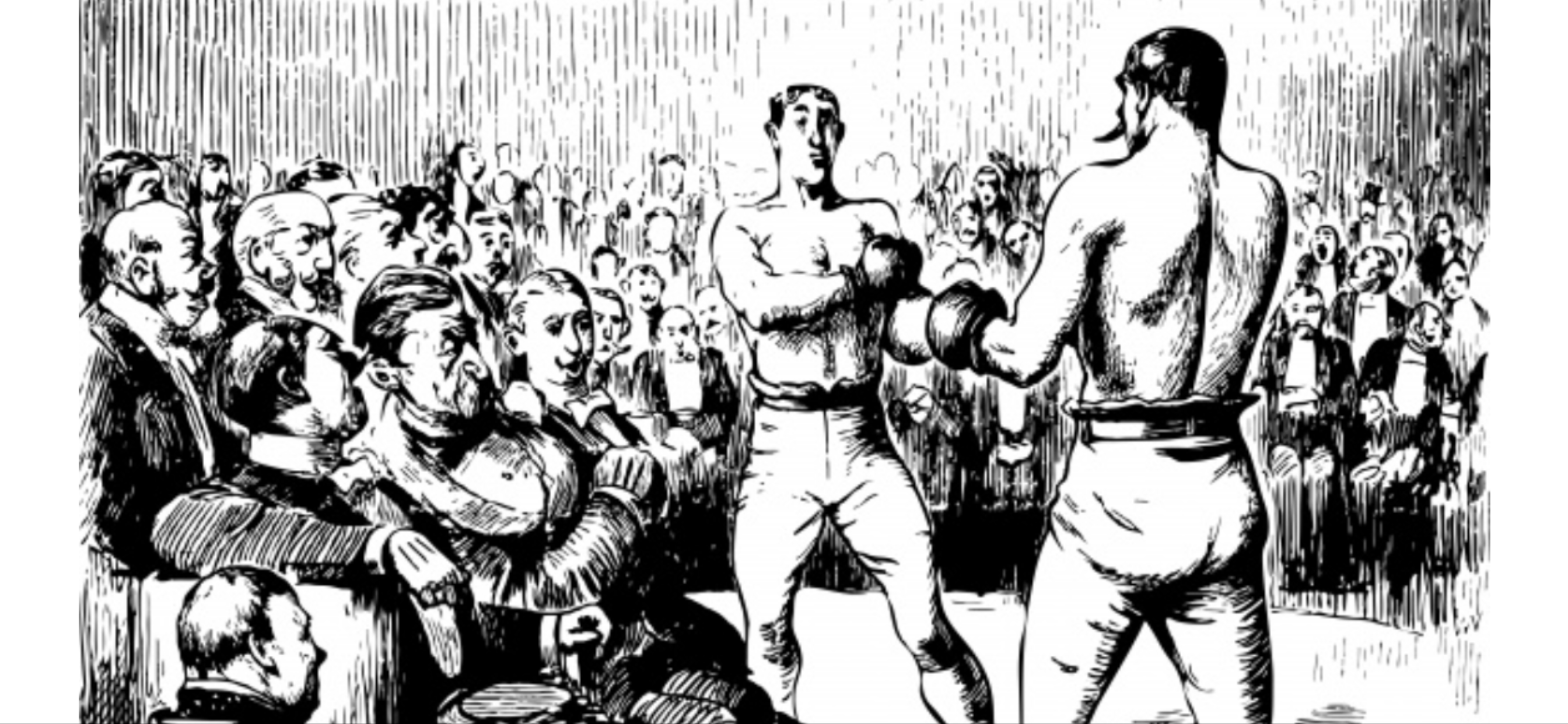
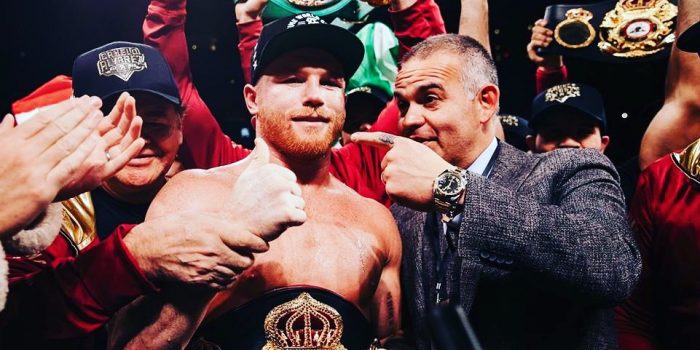
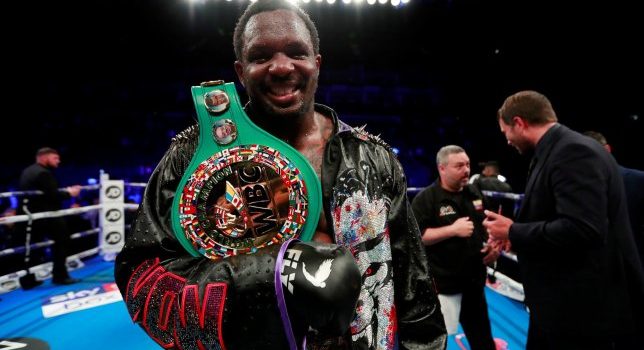
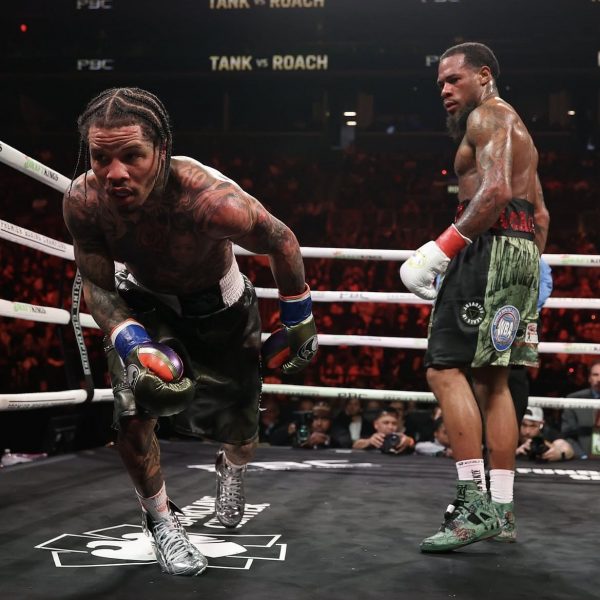
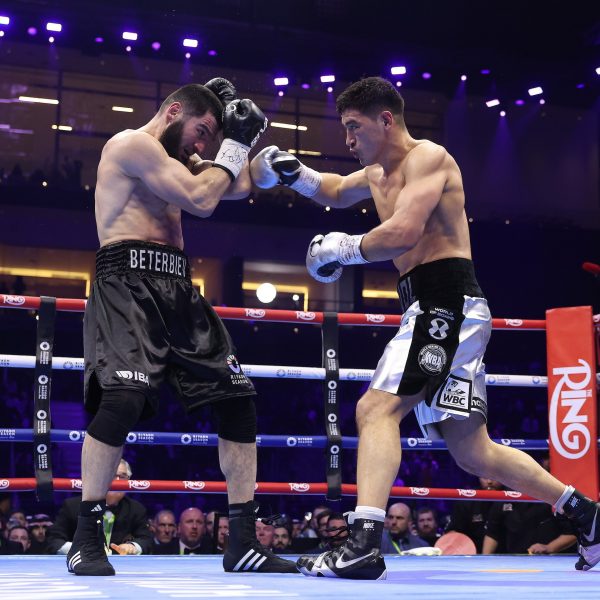
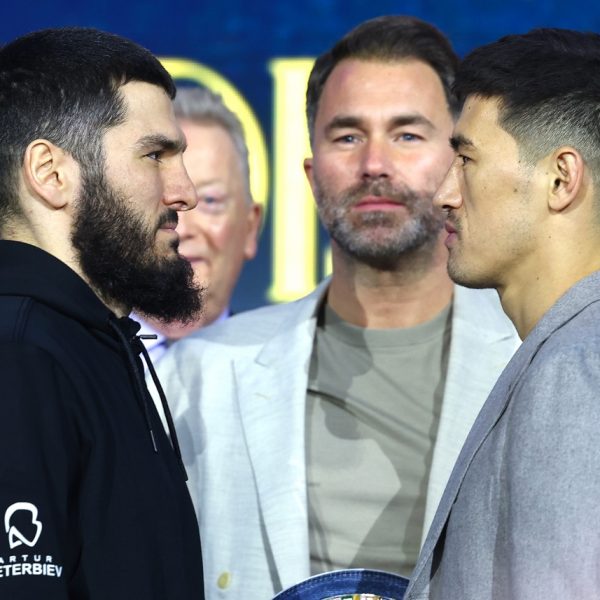
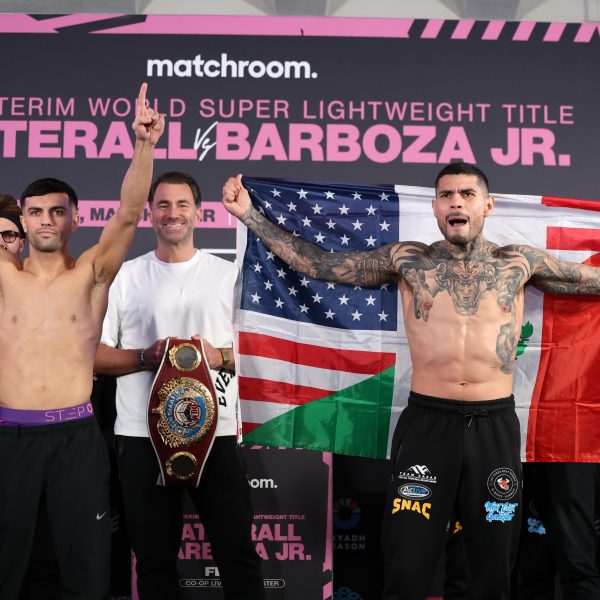
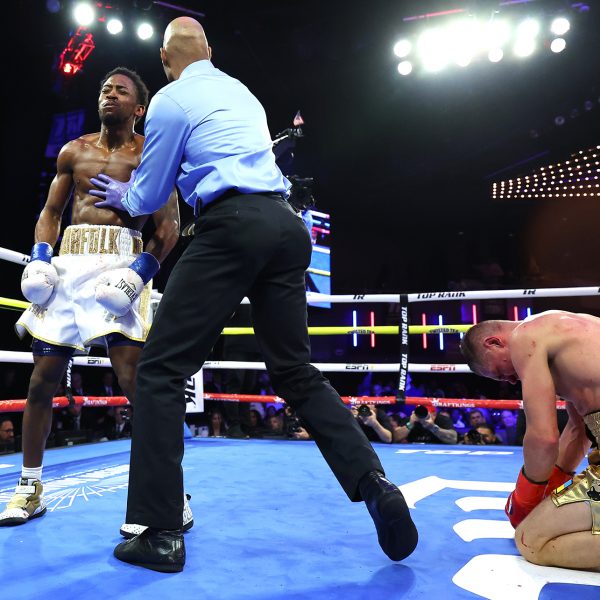
Recent Comments